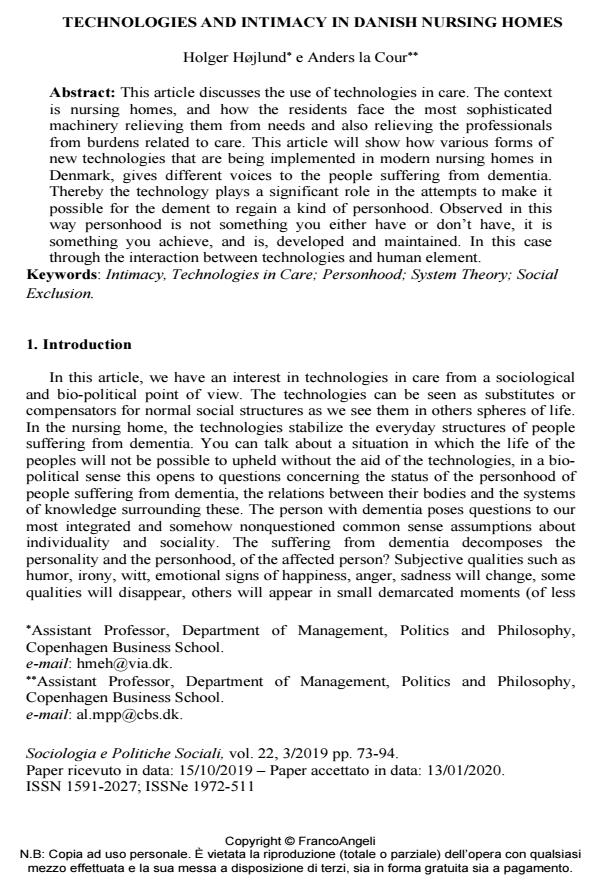Technologies and intimacy in danish nursing homes
Titolo Rivista SOCIOLOGIA E POLITICHE SOCIALI
Autori/Curatori Holger Hojlund , Anders la Cour
Anno di pubblicazione 2020 Fascicolo 2019/3
Lingua Inglese Numero pagine 22 P. 73-94 Dimensione file 264 KB
DOI 10.3280/SP2019-003004
Il DOI è il codice a barre della proprietà intellettuale: per saperne di più
clicca qui
Qui sotto puoi vedere in anteprima la prima pagina di questo articolo.
Se questo articolo ti interessa, lo puoi acquistare (e scaricare in formato pdf) seguendo le facili indicazioni per acquistare il download credit. Acquista Download Credits per scaricare questo Articolo in formato PDF

FrancoAngeli è membro della Publishers International Linking Association, Inc (PILA)associazione indipendente e non profit per facilitare (attraverso i servizi tecnologici implementati da CrossRef.org) l’accesso degli studiosi ai contenuti digitali nelle pubblicazioni professionali e scientifiche
This article discusses the use of technologies in care. The context is nursing homes, and how the residents face the most sophisticated machinery relieving them from needs and also relieving the professionals from burdens related to care. This article will show how various forms of new technologies that are being implemented in modern nursing homes in Denmark, gives different voices to the people suffering from dementia. Thereby the technology plays a significant role in the attempts to make it possible for the dement to regain a kind of personhood. Observed in this way personhood is not something you either have or don’t have, it is something you achieve, and is, developed and maintained. In this case through the interaction between technologies and human element.
Parole chiave:Intimacy, Technologies in Care; Personhood; System Theory; Social Exclusion.
Holger Hojlund , Anders la Cour, Technologies and intimacy in danish nursing homes in "SOCIOLOGIA E POLITICHE SOCIALI" 3/2019, pp 73-94, DOI: 10.3280/SP2019-003004